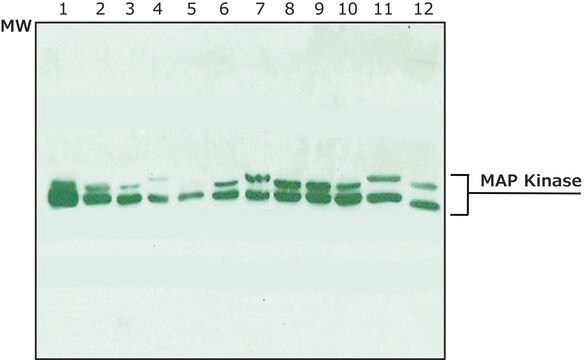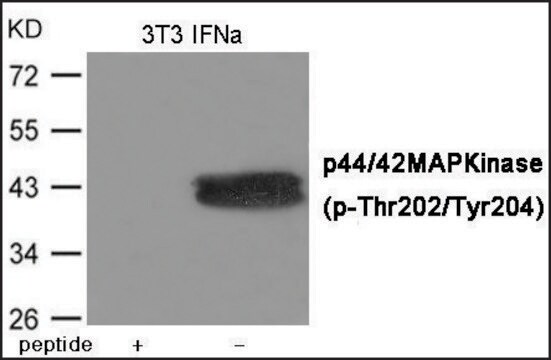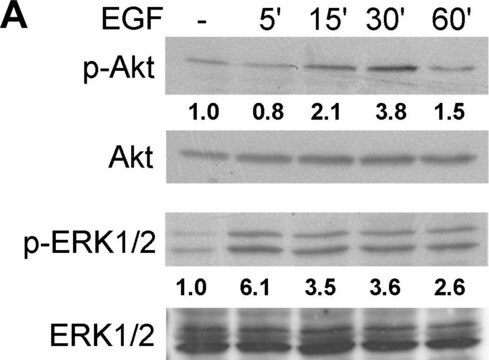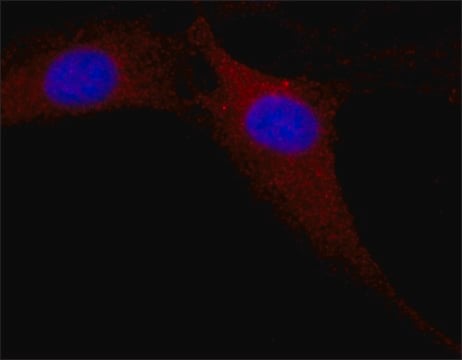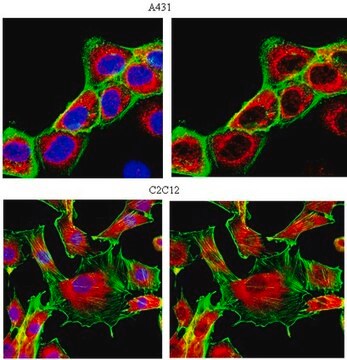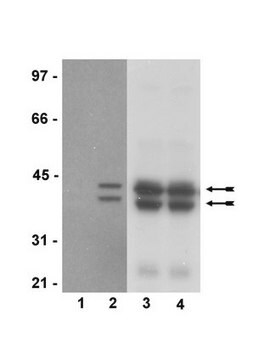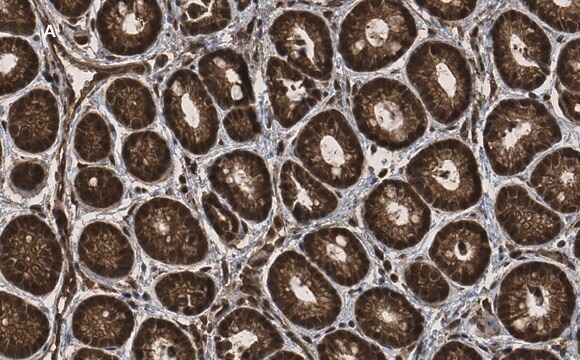04-797
Anti-phospho-MAP Kinase 1/2 (Erk1/2)(Thr185/Tyr187) Antibody, clone AW39
clone Aw39, Upstate®, from rabbit
Synonym(s):
Mitogen-activated protein kinase, Extracellular signal-regulated kinase, protein tyrosine kinase ERK2
About This Item
Recommended Products
biological source
rabbit
Quality Level
antibody form
culture supernatant
antibody product type
primary antibodies
clone
Aw39, monoclonal
species reactivity
human, rat
manufacturer/tradename
Upstate®
technique(s)
multiplexing: suitable
western blot: suitable
isotype
IgG
UniProt accession no.
shipped in
dry ice
target post-translational modification
phosphorylation (pThr185/pTyr187)
Gene Information
human ... MAPK1(5594)
rat ... Mapk1(116590)
General description
Specificity
Immunogen
Application
Signaling
MAP Kinases
A 1:2,000-1:8,000 dilution of this lot detected phospho-MAP Kinase 1/2 (Erk1/2) in RIPA lysates from NGF stimulated PC-12 cells (Figure A).
Beadlyte Phospho-Specificity Assay:
1:500-1:4,000 dilutions of a previous lot detected active but not unactive MAP Kinase/Erk2 conjugated to Luminex microspheres. (Figure B).
Quality
Target description
Linkage
Physical form
Storage and Stability
Analysis Note
RIPA cell lysate from NGF stimulated PC-12 cells
Other Notes
Legal Information
Disclaimer
Not finding the right product?
Try our Product Selector Tool.
Storage Class Code
12 - Non Combustible Liquids
WGK
WGK 1
Flash Point(F)
Not applicable
Flash Point(C)
Not applicable
Certificates of Analysis (COA)
Search for Certificates of Analysis (COA) by entering the products Lot/Batch Number. Lot and Batch Numbers can be found on a product’s label following the words ‘Lot’ or ‘Batch’.
Already Own This Product?
Find documentation for the products that you have recently purchased in the Document Library.
Our team of scientists has experience in all areas of research including Life Science, Material Science, Chemical Synthesis, Chromatography, Analytical and many others.
Contact Technical Service